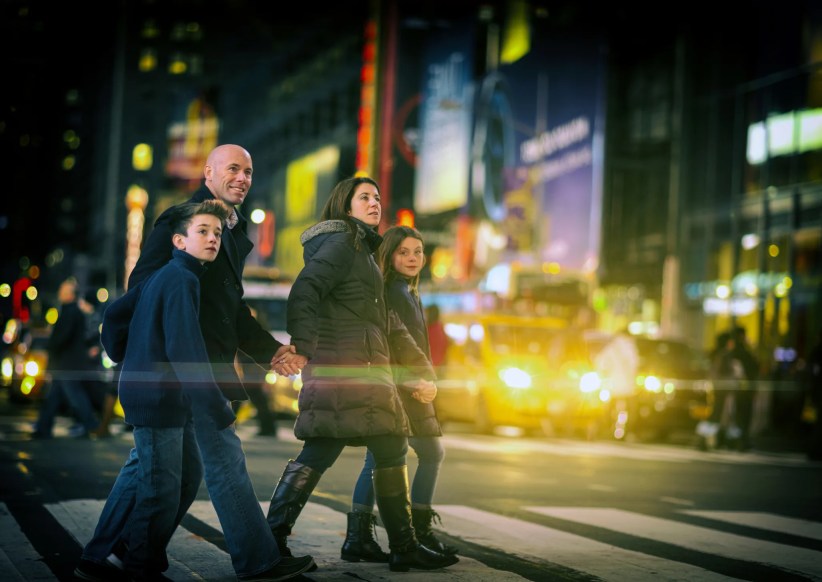By Katherine Stier
On a daily basis, 30,000 people—mostly Queens residents—travel between the Rockaways and Woodside. They are our friends, family, co-workers and neighbors. For too long, bus riders have accepted unreliable service, unnecessarily long travel times, and buses underequipped to carry the amount of passengers who use them, resulting in waiting for two or three buses to pass just to actually get on one. I know firsthand because I take the Q52/53, and I’m all too familiar with the view from out of the front windshield, crammed tightly, knowing it’s dangerous—but also knowing I’ve been late to work already this week, so I have to get on.
So you would be hard pressed to find someone who thinks Woodhaven Boulevard does not need to be fixed. It’s not just bus riders who are suffering: drivers are regularly stuck in traffic and the corridor has claimed the ignominious moniker of the Boulevard of Death. Growing up on Woodhaven/Myrtle, I’m also not a stranger to driving on the popular roadway where, before we had a bus lane, drivers would use the outermost lane as their personal outlet.
Transportation experts have identified Bus Rapid Transit, known as BRT, as the key to not just make the road safer for drivers and pedestrians, but also to relieve congestion and shorten drive times. The proposed Select Bus Service route would be the most robust version of BRT in New York City, finally putting our long-neglected borough at the forefront of modern public transit. The Riders Alliance has reached out to over 6,000 local riders who’ve have signed a petition supporting the implementation of BRT along Woodhaven and Cross Bay boulevards.
That is why opponents’ statements against DOT’s proposal to bring BRT to Woodhaven and Cross Bay boulevards are disheartening. It is shortsighted to renounce a plan that will shorten commute times and transform the corridor into a safer place.
Bringing BRT to our communities will not ruin local businesses. In fact, it protects street parking, a noted difference from the city’s standard Select Bus Service. Having passengers board the bus on built-out medians will make us safer—it shortens the walk across the dangerously wide street and makes crosswalks more visible. And the introduction of a handful of left-turn bans will make our residential streets safer as well. Before late November with the introduction of the smaller Q44 route, Queens was the only borough without Select Bus Service. Residents in other parts of the city have seen the benefits of the street redesigns that come with SBS since 2008. Businesses along those corridors have seen an increase in foot traffic and sales. Drivers spend less time stuck in traffic while bus service becomes more reliable. And most importantly, the streets became safer thanks to redesigns that made the corridors pedestrian-friendly.
It’s easy to hear that one lane of traffic will become bus-only and think Woodhaven Boulevard will become the borough’s pre-eminent parking lot, but that could not be further from the truth. The cause for all the traffic jams is when the street goes from three lanes to two, causing bottlenecks that have ripple effects along the corridor. Removing a lane means making Woodhaven and Cross Bay boulevards more consistent and less prone to traffic jams, since drivers will not need to stop and wait for an opening to merge into another lane of traffic while cars line up behind them. And the street design, which includes a separate service road, removes the congestion for drivers caused by buses pulling in and out of bus stops and delivery trucks double-parking.
Many riders, drivers, business owners, homeowners, and pedestrians have weighed in, and the DOT has heard the praise and concerns of the public. I’ve been to those public events and I’m glad to see that there’s a lot of support for a better Woodhaven Boulevard. While there is some opposition to the DOT’s proposal, the reality is that opponents have not provided solutions that would actually address the congestion that makes Woodhaven as awful as it is.
As someone whose commute is about an hour each day from Glendale to Jackson Heights, I empathize with drivers who say their commute has increased. Now I am asking drivers to empathize with transit riders who have been neglected by a city that has failed to recognize and accommodate an ever-increasing population and mass transit ridership by not implementing an updated, proven system such as SBS. The status quo isn’t working for drivers, who deal with traffic; the status quo isn’t working for riders, who have long commutes; the status quo isn’t working for pedestrians, who are injured or even killed. It’s time for a better Woodhaven. I, for one, will welcome the change.
Katherine Stier
Woodhaven
Daily rider of the Q52/53 and Riders Alliance member

































